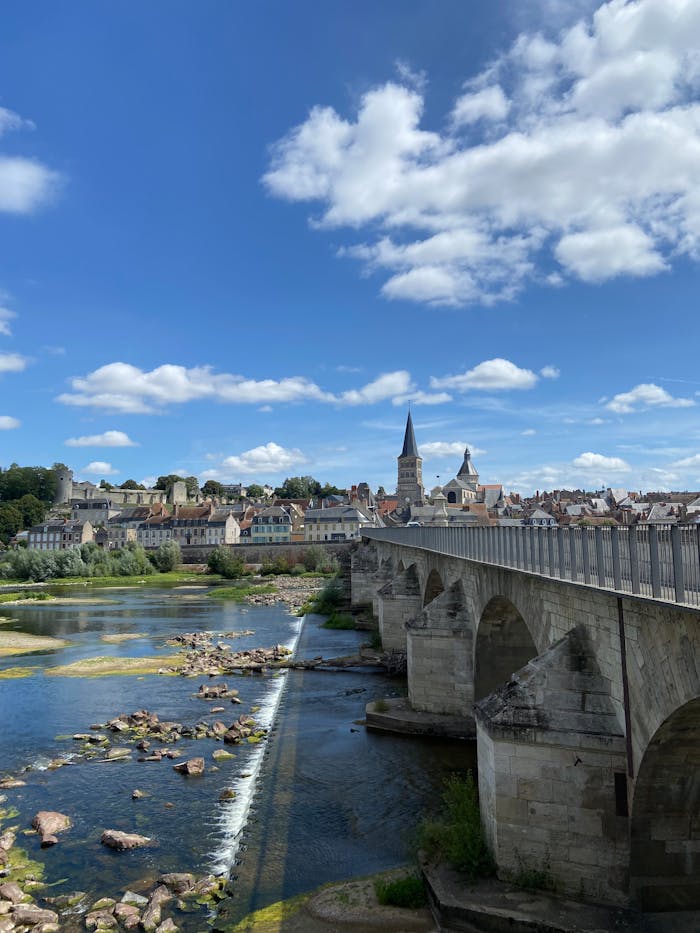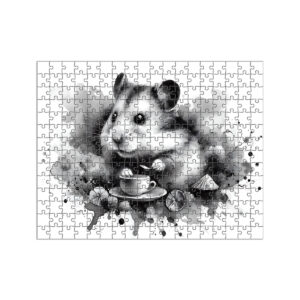
Explore & Play
Discover interesting topics and solve the accompanying crossword puzzle.
French River Crossword | Explore iconic waterways and history
Discover our French river crossword to test your knowledge, followed by an in-depth article exploring France’s most iconic waterways and their rich history. Perfect for a river-inspired puzzle experience.
Table of Contents
Start your journey with our French river crossword to test what you know, then dive into the article for deeper insights. Or, if this topic is new to you, feel free to explore the article first, then return to the crossword for a fun challenge.
French River Crossword
You can either fill in the crossword puzzle directly on this page or click the button in the bottom right corner to print it for free.

Exploring France’s Waterways: A Guide to the Country’s Most Famous Rivers
France’s rivers have shaped its landscapes, enriched its cities, and nourished its culture for centuries. Each river offers its own unique path, carving routes through historical cities, lush valleys, and iconic landmarks. In this guide, we’ll explore the major rivers flowing through France, from the tranquil Loire Valley to the bustling Seine in Paris. For those curious to test their knowledge, a special crossword puzzle awaits at the end of this journey.
The Seine: France’s Cultural and Historical Heartline
Flowing Through the Heart of Paris
The Seine is more than just a river; it’s an emblem of French history and culture. Stretching over 777 kilometers, it begins in Burgundy, flows through the heart of Paris, and reaches its end at the English Channel. As it winds through Paris, the Seine offers views of landmarks like the Eiffel Tower, Notre-Dame Cathedral, and the Louvre, enriching the city’s landscape.Historic and Cultural Significance
For centuries, the Seine has supported Paris as a trade route and waterway. Romans established Paris on the Seine’s banks, and the city grew around it, developing into the bustling capital it is today. The river’s banks, bridges, and boats have inspired artists, writers, and visitors alike, establishing its reputation as the beating heart of Parisian culture.Loire: The Longest River and the Valley of Castles
A UNESCO Heritage Site
Spanning over 1,000 kilometers, the Loire is France’s longest river, flowing through central France to the Atlantic. The river is renowned for its UNESCO-listed Loire Valley, where elegant châteaux and vibrant vineyards create a stunning landscape. Known as the “Garden of France,” the region is an agricultural hub, with orchards, fields, and vineyards flourishing along the river.Castles and Majestic Scenery
The Loire Valley boasts over 300 castles, including Château de Chambord and Château de Chenonceau, which attract millions of visitors yearly. Each château tells a story of France’s royalty and Renaissance past, with grand gardens, intricate architecture, and lush surroundings that seem almost enchanted. Cities like Orléans and Tours along the river offer vibrant communities, markets, and festivals celebrating the Loire’s heritage.Rhône: Connecting the Alps to the Mediterranean
The Journey Through Lyon and Provence
The Rhône begins in the Swiss Alps, flowing southwest into France, where it travels through Lyon, Provence, and finally reaches the Mediterranean Sea. Known for its powerful currents, the Rhône has long been a significant route for commerce, linking France with the Mediterranean world.Ecological and Cultural Importance
The Rhône River Valley is famous for its fertile vineyards, producing wines like Côtes du Rhône and Châteauneuf-du-Pape. The river also supports energy production, with numerous hydroelectric dams along its course. The Rhône’s natural beauty and cultural significance make it a favorite among tourists exploring the French countryside.Garonne and Dordogne: A Meeting of Rivers
Bordeaux’s Wine Country
In southwestern France, the Garonne and Dordogne rivers converge, creating the Gironde Estuary and fostering one of the world’s most famous wine regions. Bordeaux, situated on the Garonne, owes much of its economic success to these waterways, which support the wine industry by transporting goods and providing ideal growing conditions.Scenic Towns and Prehistoric Sites
The Dordogne River is known for its scenic beauty, with charming villages and prehistoric caves along its banks. Notable stops include Bergerac and Saint-Émilion, towns steeped in history and surrounded by rolling vineyards and medieval architecture. Visitors can explore ancient rock formations, historic châteaux, and unique landscapes formed by the Garonne and Dordogne.Marne and the Battlefields of History
France’s World War I Legacy
The Marne River played a crucial role during World War I, becoming the site of significant battles. The Marne flows northeast of Paris, and its valley holds memorials, cemeteries, and monuments commemorating the lives lost in battle. This river offers a serene landscape today, with vineyards producing Champagne in the Marne Valley.Exploring Champagne and Historical Sites
Beyond its wartime legacy, the Marne Valley is famous for its Champagne production, with vineyards stretching along its banks. Reims, a city along the Marne, is the capital of the Champagne region, where visitors can tour cellars and taste sparkling wines. The Marne combines France’s history and elegance, from ancient battlegrounds to lush vineyards.Somme: A River of Remembrance
The Quiet Flow of History
The Somme River is a gentle waterway today, but it holds deep historical significance due to the battles fought along its banks during World War I. Flowing through northern France, the Somme connects cities like Amiens and Péronne, where museums and memorials remember the soldiers who served in the Great War.Amiens Cathedral and Scenic Villages
Amiens Cathedral, a UNESCO World Heritage Site, is one of France’s most beautiful cathedrals and overlooks the Somme River. Along the river, small villages offer picturesque scenery, with fields, marshlands, and waterways creating a tranquil landscape for remembrance and reflection.The Tributaries of the Seine: Oise, Eure, and Yonne
Charming Tributaries and French Villages
Several smaller rivers, including the Oise, Eure, and Yonne, feed into the Seine, each adding character and charm to northern France. The Oise flows through the town of Chantilly, known for its elegant château and equestrian heritage. The Eure passes through Giverny, where Monet painted his famous water lilies, while the Yonne supports vineyards in Burgundy.Vineyards, Castles, and Art
These tributaries enhance France’s cultural landscape, each river with its own blend of attractions. From medieval castles along the Yonne to the Eure’s picturesque gardens, these rivers invite travelers to explore France’s regional traditions, wine, and art.Rivers of the South: The Tarn, Lot, and Aude
Gorges, Valleys, and Prehistoric Sites
In southern France, the Tarn, Lot, and Aude rivers carve unique landscapes and offer outdoor adventures. The Tarn River is famous for its dramatic gorges, which attract kayakers and hikers. The Lot winds through ancient villages and lush valleys, while the Aude has historic connections to the Cathar region.Cultural Treasures and Outdoor Activities
The Tarn and Lot rivers pass through scenic villages with limestone cliffs and rolling hillsides. Cahors, a town along the Lot, is renowned for its wine, while the Aude flows near Carcassonne, a medieval fortress. These rivers invite travelers to explore France’s southern charm, history, and natural beauty.Brittany’s Rivers: Vilaine and Blavet
Rivers of Celtic Heritage
In Brittany, the Vilaine and Blavet rivers offer glimpses into the region’s Celtic heritage and natural beauty. The Vilaine flows through Rennes, Brittany’s capital, while the Blavet crosses Lorient, known for its Celtic festivals and seaside charm.Nature, Heritage, and Festivities
The Vilaine and Blavet rivers pass through lush countryside, with fishing villages and forests along their banks. Brittany’s rivers are central to local traditions, where music, dance, and storytelling bring the Celtic past to life during festivals.The Rhône’s Tributaries: Saône, Isère, and Drôme
Tributaries That Add Power and Character
The Saône, Isère, and Drôme rivers all contribute to the Rhône’s course, adding their own stories along the way. The Saône merges with the Rhône in Lyon, creating an important trade route. The Isère flows near the French Alps, while the Drôme offers outdoor adventure with clear, pristine waters.Gateway to Vineyards and Mountains
These tributaries enhance the Rhône Valley’s natural landscape, from mountain vistas along the Isère to vineyards in the Saône Valley. Lyon, located where the Saône and Rhône meet, serves as a gateway to both the Alps and Provence, offering an ideal blend of urban life and outdoor exploration.Small but Significant: Charente, Adour, and Sèvre
Agricultural and Coastal Influence
The Charente, Adour, and Sèvre rivers are smaller in size but hold considerable cultural and economic importance. The Charente flows through Cognac, renowned for its brandy production, while the Adour travels near the Pyrenees and the Atlantic, affecting the local fishing industry.Scenic Towns and Unique Flavors
Cognac’s historic distilleries, Bayonne’s cultural festivals, and scenic towns along the Charente, Adour, and Sèvre bring France’s rural life to light. These rivers highlight the French tradition of regional flavors and local craftsmanship.Rivers of the North: Canche, Authie, and Escaut
Quiet Waterways with Historic Borders
In northern France, rivers like the Canche, Authie, and Escaut have shaped local economies and landscapes. Flowing through border regions, they have seen centuries of trade and movement. The Canche and Authie flow through Pas-de-Calais, while the Escaut, known in Belgium as the Scheldt, connects France to northern Europe.Northern Villages and Trade Routes
These rivers run through scenic countryside, connecting small villages and local businesses. The rivers’ importance in trade throughout history can still be seen in bustling northern towns and picturesque farmsteads along their banks.Natural Beauty and Outdoor Adventures
River Recreation and Scenic Landscapes
From whitewater rafting on the Sioule to hiking near the Ardèche, France’s rivers offer countless outdoor adventures. The Ardèche is known for its natural arches and gorges, while the Verdon River boasts Europe’s deepest canyon.France’s Unspoiled River Valleys
The rivers of France provide ideal settings for hiking, fishing, and kayaking. From the rocky cliffs along the Verdon to the lush landscapes of the Sioule, each river valley offers a unique opportunity to explore France’s natural wonders.Discover the Rivers of France
France’s rivers flow through history, art, and culture, each one contributing to the nation’s vibrant heritage. They create landscapes that blend historical charm with natural beauty, inviting both locals and visitors to explore their depths. Ready to test your knowledge on these rivers? Try our crossword puzzle and see how much you remember from your journey through France’s waterways. Happy puzzling!Share to...
Thank you for reading 👋
I hope you enjoy the content.
I hope you enjoy the content.
Want to receive our daily crossword puzzle or article? Subscribe!
You may also be interested in
Share to…
Want to receive our daily crossword puzzle?
-
Jigsaw Puzzles
Whimsical Hamster Jigsaw Puzzle in Watercolor Style 250 | 300 | 500 Brikker
kr 348,00 – kr 439,00Price range: kr 348,00 through kr 439,00 Select options This product has multiple variants. The options may be chosen on the product page -
Jigsaw Puzzles
Lofoten Serenity: Abstract Puzzle 250 | 300 | 500 Pieces
kr 348,00 – kr 439,00Price range: kr 348,00 through kr 439,00 Select options This product has multiple variants. The options may be chosen on the product page -
Jigsaw Puzzles
Fjord Elegance: Abstract Jigsaw Puzzle 250 | 300 | 500 Pieces
kr 348,00 – kr 439,00Price range: kr 348,00 through kr 439,00 Select options This product has multiple variants. The options may be chosen on the product page

















